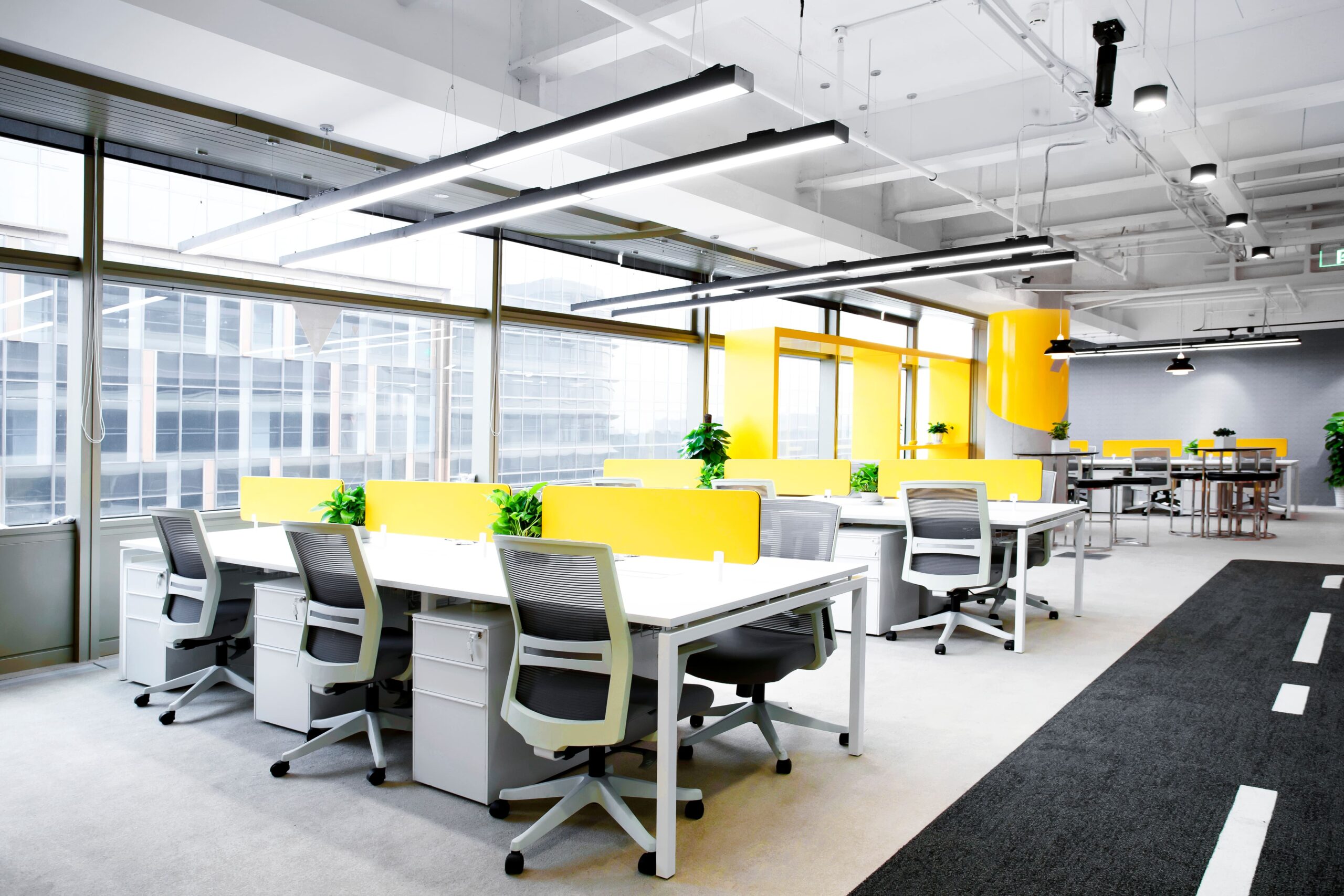As the nature of work evolves and technology continues to advance, office interiors are undergoing a transformation to meet the changing needs and expectations of modern businesses and employees. In this blog, we’ll explore the future of office interiors by examining emerging trends and innovations in workplace design that are reshaping the way we work, collaborate, and thrive in the digital age.
- Embracing Hybrid Work Models:
- Discuss the rise of hybrid work models that combine remote and in-office work, and the implications for office design.
- Explore flexible workspace solutions, such as hot-desking, activity-based seating, and shared collaboration zones, that accommodate a blend of remote and on-site employees.
- Showcase examples of office interiors designed to support hybrid work models, featuring adaptable layouts, modular furniture, and integrated technology solutions that facilitate seamless collaboration and communication across distributed teams.
- Prioritizing Employee Well-being and Mental Health:
- Highlight the growing emphasis on employee well-being and mental health in workplace design, particularly in light of the COVID-19 pandemic.
- Discuss the integration of wellness-focused design elements, such as biophilic elements, natural light, ergonomic furniture, and dedicated relaxation areas, that promote physical and mental wellness among employees.
- Explore the role of technology in supporting employee well-being, from smart sensors and lighting systems that adjust to circadian rhythms to wellness apps and digital platforms that provide resources and support for mental health and work-life balance.
- Redefining the Purpose of the Physical Office:
- Examine how the role of the physical office is evolving from a traditional workspace to a hub for collaboration, innovation, and culture-building.
- Discuss the concept of “third spaces” within the office environment, such as cafes, lounges, and innovation labs, that foster creativity, serendipitous interactions, and community engagement.
- Showcase examples of forward-thinking office interiors that prioritize experiential design, employee engagement, and cultural authenticity to create inspiring and dynamic work environments.
- Embracing Sustainable Design Practices:
- Explore the growing importance of sustainability in office interior design, driven by environmental concerns and corporate social responsibility.
- Discuss sustainable design strategies, such as energy-efficient lighting, recycled materials, low-VOC finishes, and green building certifications, that reduce environmental impact and promote resource conservation.
- Showcase examples of eco-friendly office interiors that integrate sustainable principles into every aspect of the design process, from construction and materials sourcing to operation and maintenance.
- Leveraging Technology for Smart Workspaces:
- Discuss the role of technology in creating smart workspaces that enhance productivity, efficiency, and collaboration.
- Explore emerging technologies such as Internet of Things (IoT) sensors, artificial intelligence (AI), augmented reality (AR), and virtual collaboration tools that optimize space utilization, automate routine tasks, and facilitate remote and hybrid work experiences.
- Showcase examples of cutting-edge office interiors that leverage technology to create connected, data-driven environments that adapt to the needs and preferences of employees in real-time.
Conclusion:
The future of office interiors is evolving rapidly, driven by advancements in technology, changes in work culture, and a renewed focus on employee well-being and sustainability. By embracing hybrid work models, prioritizing employee well-being, redefining the purpose of the physical office, embracing sustainable design practices, and leveraging technology for smart workspaces, organizations can create inspiring and innovative work environments that empower employees to thrive in the digital age. As we look ahead to the future of office interiors, it’s clear that the possibilities are limitless for creating workplaces that are not only functional and efficient but also inspiring, inclusive, and transformative.

